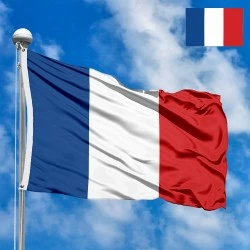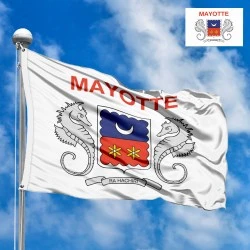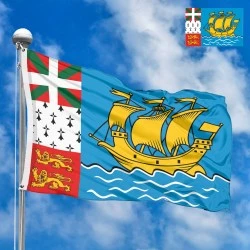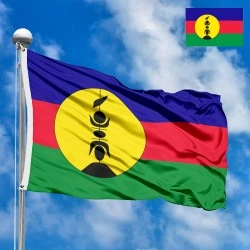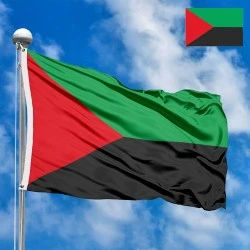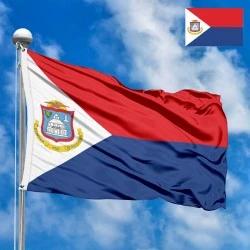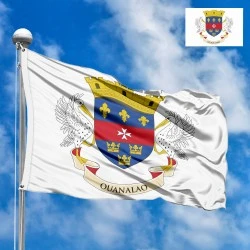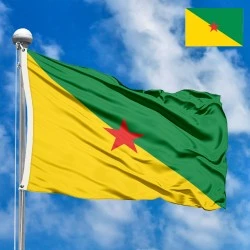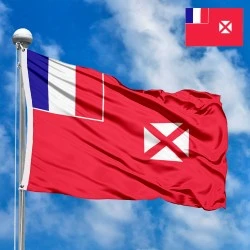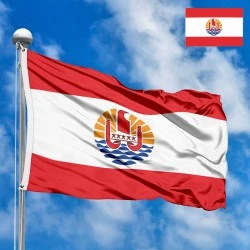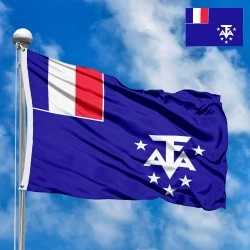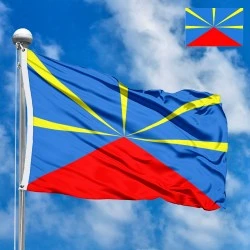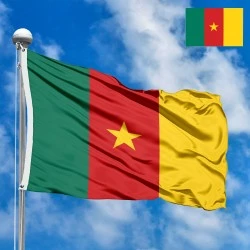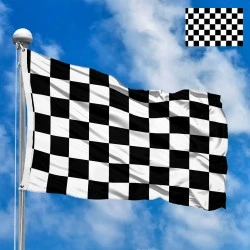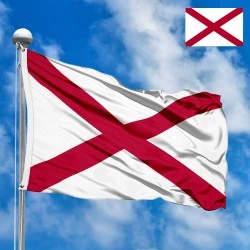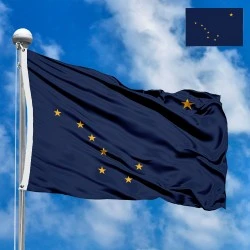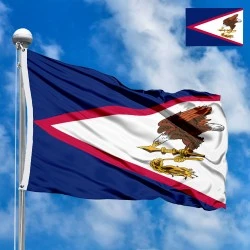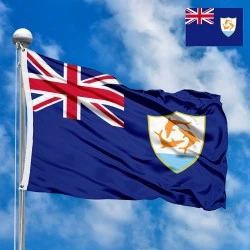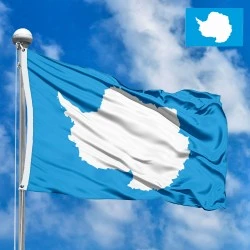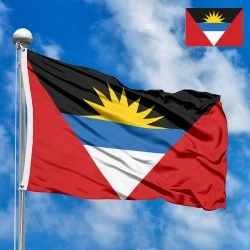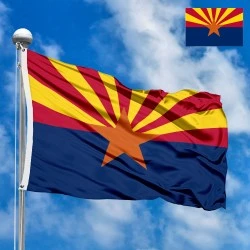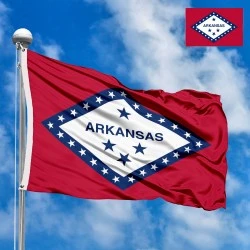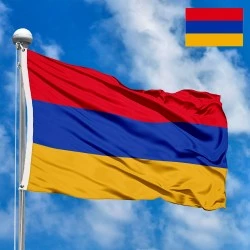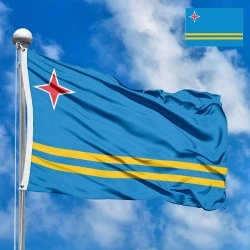Flag of Guadeloupe (unofficial)
- Flag Type: Regional
- Proportions (official): 2:3
- Official name: Guadeloupe
- Local name: Guadeloupe
- Sovereignty (year): NO (Overseas department and region of France)
- Country code, territory: GP, GLP, 312
- Capital: Basse-Terre
- Large cities: Les Abymes, Pointe-à-Pitre, Le Gosier
- Population: ~397,000 (2024, estimate)
- Religions: Christianity ~90%
- Area (km²): 1 628
- Highest point: Soufrière (1,467 m)
- Lowest point: Atlantic Ocean (0 m)
- Currency: Euro (EUR, €)
- Languages: French
- Dialing code: +590
- National domain: .gp
Flag Information
General information
Demography and Culture
Economy and communications
- All Flags
- Flags of Countries by Continent
-
Flags of Organizations
- Flags of UN countries
- Flags of the European Union countries
- Flags of NATO countries
- Flags of the countries of the Organization of Islamic Cooperation
- Flags of the countries of the Organization of American States
- Flags of the Arab League countries
- Flags of the African Union countries
- Flags of the countries of the Union of South American Nations
- Flags of the Commonwealth of Nations
- Flags of the countries of the Secretariat of the Pacific Community
- Flags of the Nordic Council countries
- Flags of the Caribbean Community
- Flags of the countries of the Association of Southeast Asian Nations
- Flags of the East African Community
- Flags of the countries of the Organization of Turkic States
- LGBT Community Flags
- Historical Flags
- Ethnic Flags
- Flags of the USA (states)
Description
The flag of Guadeloupe, bearing its traditional emblem, is a profoundly significant unofficial symbol that encapsulates the island's complex identity. While the official flag of the region is the French Tricolour, this particular banner is a popular and historic representation of Guadeloupe’s unique heritage. It artfully blends symbols of its colonial past with emblems of its local culture and identity, creating a rich tapestry of meaning that resonates deeply with many of its residents. The design is a powerful visual statement that simultaneously acknowledges the island's ties to France and celebrates its own distinct character.
Design and Symbolism: A Blend of Heritage and History
This flag is designed as a vertical banner, though it is often displayed horizontally. It features a black field with a stylized sun and a sugarcane plant in the bottom half, surmounted by a blue band with three golden fleurs-de-lis.
-
The Black Field and Central Emblem: The lower portion of the flag is a black field, a color of immense historical significance for the island. It symbolizes the African heritage of the majority of the population and serves as a powerful testament to the painful history of slavery and the subsequent struggle for dignity and freedom. Overlaid on the black field is a golden-yellow stylized sun and a sugarcane plant. The sun represents the vibrant Caribbean climate and the life-giving energy of the region. The sugarcane plant, a central element of the flag’s design, is a crucial symbol of the island's main agricultural product and its deep economic and social history, which is inextricably linked to the colonial plantation system.
-
The Blue Band with Fleurs-de-lis: The upper part of the flag features a blue band adorned with three golden fleurs-de-lis. This element is a direct representation of the historical coat of arms of Guadeloupe. The fleurs-de-lis are an ancient symbol of the French monarchy and their presence on the flag directly links the island to its status as a French overseas territory. For many, this represents an acknowledgment of the island's history as a part of the French empire, while for others, it is a reminder of the colonial past and a point of contention.
History and Origins: The Evolution of a Symbol
This flag is not the product of a specific political movement, but rather the result of a long, organic evolution of symbols. The coat of arms, featuring the blue band with the fleurs-de-lis and the sun over a green field, was officially granted to Guadeloupe by the French government. Over time, particularly during the mid-20th century, the green field was often replaced by a black field to represent the island’s African heritage and history of slavery, giving rise to this modern, unofficial version. This flag embodies a unique duality, combining the official French heraldic symbols with locally significant emblems. It represents a different facet of Guadeloupe’s identity compared to the green and black flag used by pro-independence movements, one that acknowledges the island's French connection while still celebrating its local and African heritage.
Status and Adoption: Unofficial but Widely Used
It is important to emphasize that this flag, like other popular symbols, is unofficial. The only legally recognized flag is the French Tricolour. Nevertheless, the flag with the traditional emblem is widely used by the local administration and by the public. It is frequently seen on public buildings, on local government vehicles, and on souvenirs. Its usage reflects a nuanced view of Guadeloupean identity that embraces both the French connection and a distinct cultural identity. Its presence in daily life underscores its importance as a cherished emblem, despite its lack of official status.
Size and Proportions
This flag, when displayed, typically follows the standard flag proportion of 2:3. The size and placement of the various elements—the blue band, the black field, and the central emblem—are balanced to ensure a visually striking and easily recognizable design.
Interesting Facts and Regional Significance
The design of this flag is a source of both pride and debate.
-
Duality in Design: The flag’s design, featuring both French royal symbols (fleurs-de-lis) and local symbols of identity (the sun and sugarcane), makes it a unique and complex emblem. It embodies the essence of Guadeloupe’s dual identity as both French and Caribbean.
-
Symbol of Historical Debate: For some, the inclusion of the fleurs-de-lis is a point of pride, signifying Guadeloupe’s place in the broader Francophone world. For others, particularly those who have experienced racial and social inequalities, the symbols of the French monarchy are a painful reminder of a colonial past and are viewed as inappropriate for a modern Caribbean identity.
-
A Visual History: This flag is a visual representation of Guadeloupe's entire history, from its colonial origins to its present-day identity. It tells a story of an island shaped by both European influence and the resilience of its African-descended population.
Significance for the People
For many residents of Guadeloupe, this flag is a powerful and cherished symbol. It represents a complete picture of the island's history and identity, acknowledging both its French heritage and its distinct local culture. It is an emblem of pride, a connection to their land and its history, and a unifying symbol that transcends political divisions. While some may prefer other flags that more overtly reject colonial symbols, this flag remains a popular and widely used emblem that captures the layered and multifaceted nature of being Guadeloupéen.
In the demonstration images, full-size flags are shown with proportions of 2:3, and hand-held flags with proportions of 1:2.
Donation
Download
Completely free for commercial and non-commercial use (public domain).
You can freely use them in your news magazines, websites, software, mobile applications.
We appreciate a backlink to https://flagssite.com
Raster files - Flag of Guadeloupe (unofficial) (PNG, JPG)
 Waving flag
Waving flag
- PNG format (transparent background), 72dpi, dimensions in Pixels (px), aspect ratio 3:4.
- 15х20 px
- 30х40 px
- 60х80 px
- 120x160 px
- 240x320 px
 Sizes:
Sizes:
"v15" - image size (by height); if necessary, replace with available: v15, v30, v60, v120, v240.
!!! For resizing, use the Latin (eng) keyboard layout.
<img src="https://flagssite.com/flags/v15/20528.png" alt="Flag of Guadeloupe (unofficial)">
 Round flag
Round flag
- PNG format (transparent background), 72dpi, dimensions in Pixels (px), aspect ratio 1:1.
"d15" - image size (diameter); if necessary, replace with available: d15, d30, d60, d120, d240.
!!! For resizing, use the Latin (eng) keyboard layout.
<img src="https://flagssite.com/flags/d15/20528.png" alt="Flag of Guadeloupe (unofficial)">
 Rectangular flag 2:3
Rectangular flag 2:3
- JPG format, 72dpi, dimensions in Pixels (px), aspect ratio 2:3.
"h30" - image size (by height); if necessary, replace with available: h15, h30, h60, h120, h240, h360, h480.
!!! For resizing, use the Latin (eng) keyboard layout.
<img src="https://flagssite.com/flags/h30/20528.jpg" alt="Flag of Guadeloupe (unofficial)">

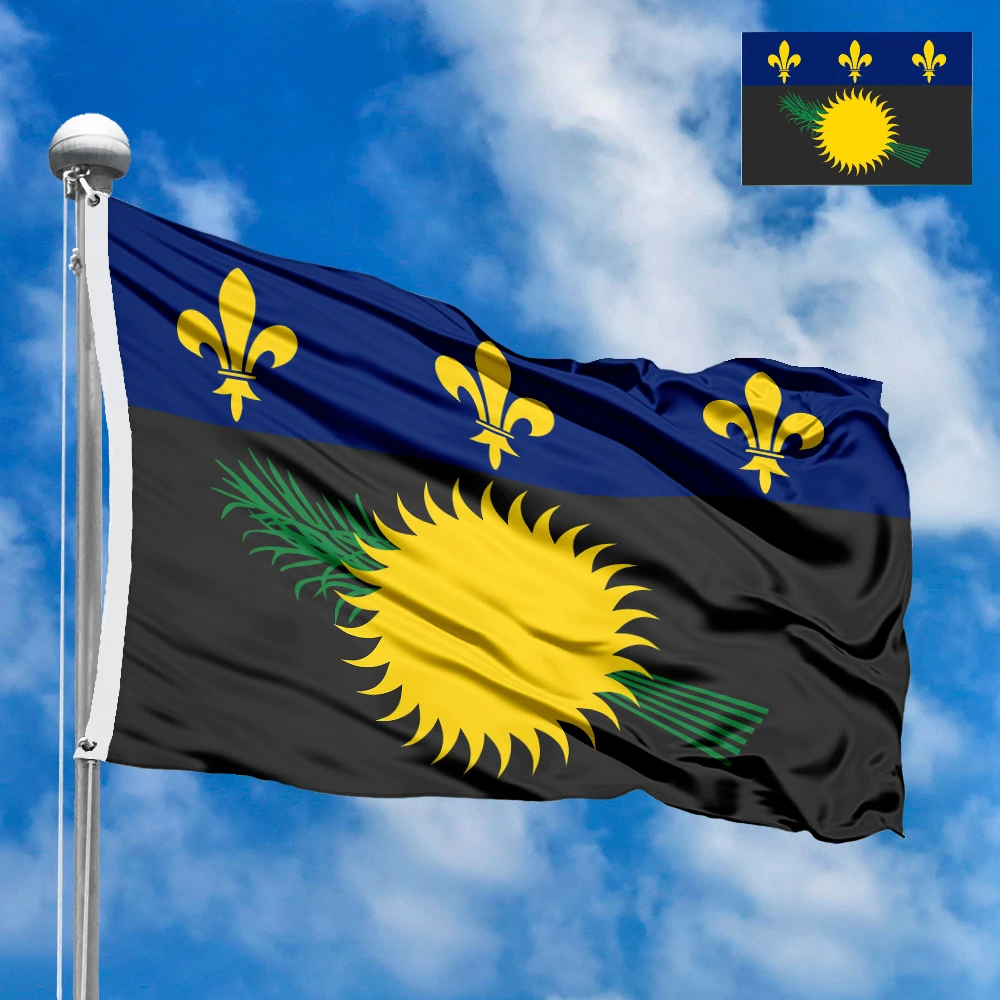
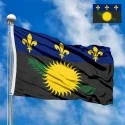
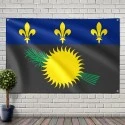
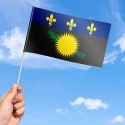
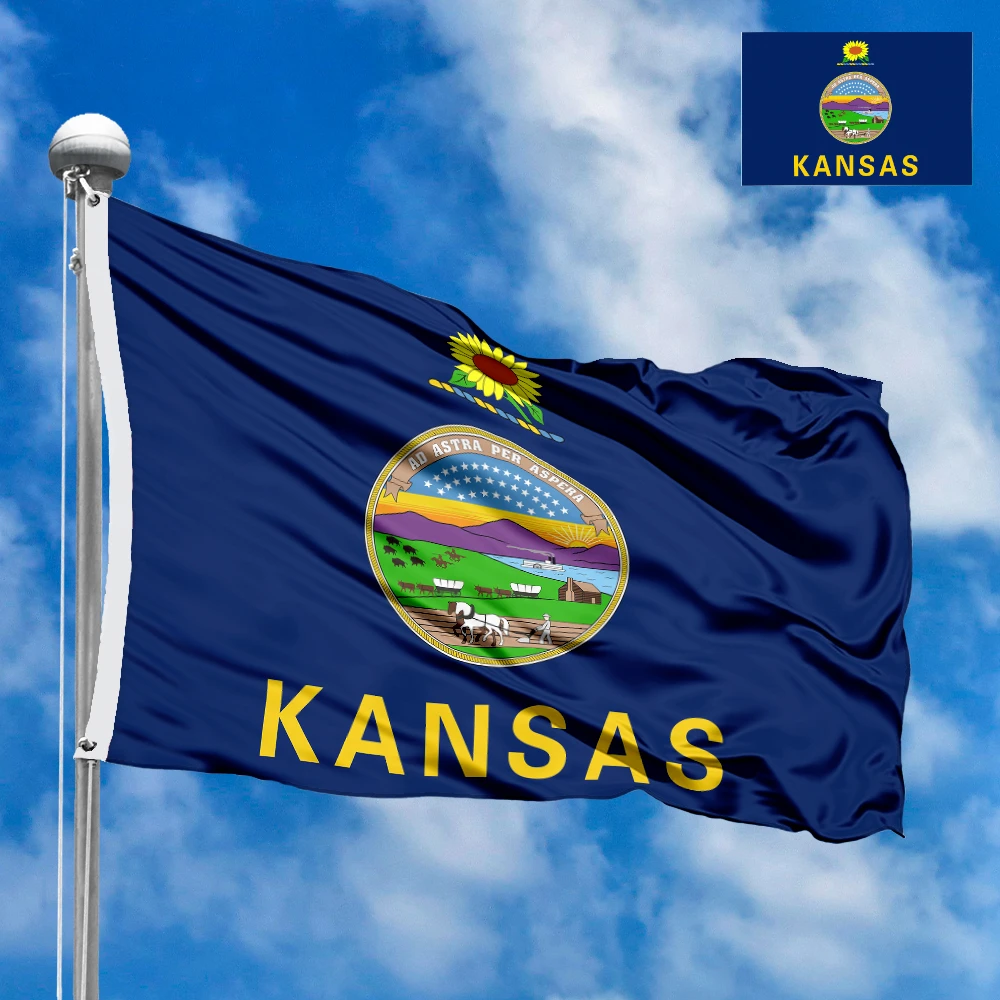

 Sizes:
Sizes:
 Sizes:
Sizes:
